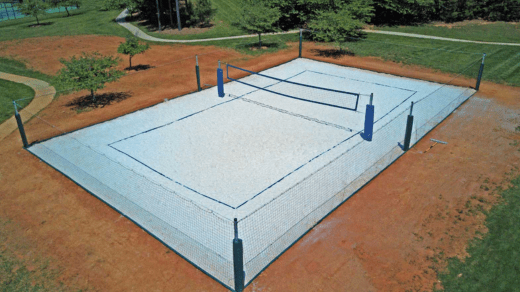Volleyball is a popular sport that requires a properly designed and installed court to ensure optimal gameplay. Whether you’re setting up a court for professional competitions, recreational use, or even in your backyard, it’s important to follow expert insights and best practices for volleyball court installation. This article provides a comprehensive guide to help you create a high-quality volleyball court that meets the necessary standards.
Selecting the Right Location
Before diving into the installation process, you need to choose the right location for your volleyball court. Consider factors such as available space, proximity to surrounding structures, accessibility, and the orientation of the court to minimize sun glare during gameplay.
Measuring and Marking the Court
Accurate measurements are crucial for a well-designed volleyball court. Use a measuring tape and marking tools to outline the dimensions of the court, which should be 18 meters long and 9 meters wide. Ensure that the sidelines are parallel and the court is centered within the available space.
Preparing the Ground
Proper ground preparation is essential for a stable and durable volleyball court. Clear the area of any debris, rocks, or vegetation. Level the ground using a rake or a roller to ensure a smooth playing surface. Consider using a geotextile fabric to prevent weed growth and improve drainage.
Court Surface Selection
The choice of court surface depends on various factors, including budget, level of play, and maintenance requirements. Common options include sand, grass, asphalt, and synthetic materials like sport tiles or artificial turf. Each surface has its advantages and disadvantages, so choose one that suits your specific needs and preferences.
Installing Boundary Lines
Clearly marked boundary lines are crucial for players to determine in-play and out-of-play areas. Use high-quality paint or tape to mark the lines accurately. The sidelines should be 5 centimeters wide, while the end lines should be 5 centimeters wide and 18 meters long.
Setting up the Net and Poles
The net and poles are integral components of a Volleyball court installation. Install sturdy and adjustable poles on each side of the court, ensuring they are securely anchored. The top edge of the net should be 2.43 meters high for men’s competitions and 2.24 meters high for women’s competitions. Adjust the net tension to achieve the proper height and tightness.
Equipment and Safety Considerations
To enhance player safety and comfort, consider installing additional equipment. Provide boundary markers, referee stands, and padding for poles and other potential collision points. Ensure that the court is well-lit for evening play and that emergency equipment, such as first aid kits and emergency contact information, is readily available.
Maintenance and Upkeep
Regular maintenance is crucial to keep the volleyball court in optimal condition. Sweep the court regularly to remove debris and maintain its cleanliness. Inspect and repair any damaged boundary lines or net components promptly. If using a synthetic surface, follow the manufacturer’s guidelines for cleaning and maintenance. Installing a volleyball court requires careful planning, attention to detail, and adherence to best practices. By following the expert insights provided in this article, you can create a high-quality court that provides an excellent playing experience for both casual and professional players. Remember to consider factors such as location, court dimensions, surface selection, and equipment installation to ensure a safe and enjoyable environment for volleyball enthusiasts.

